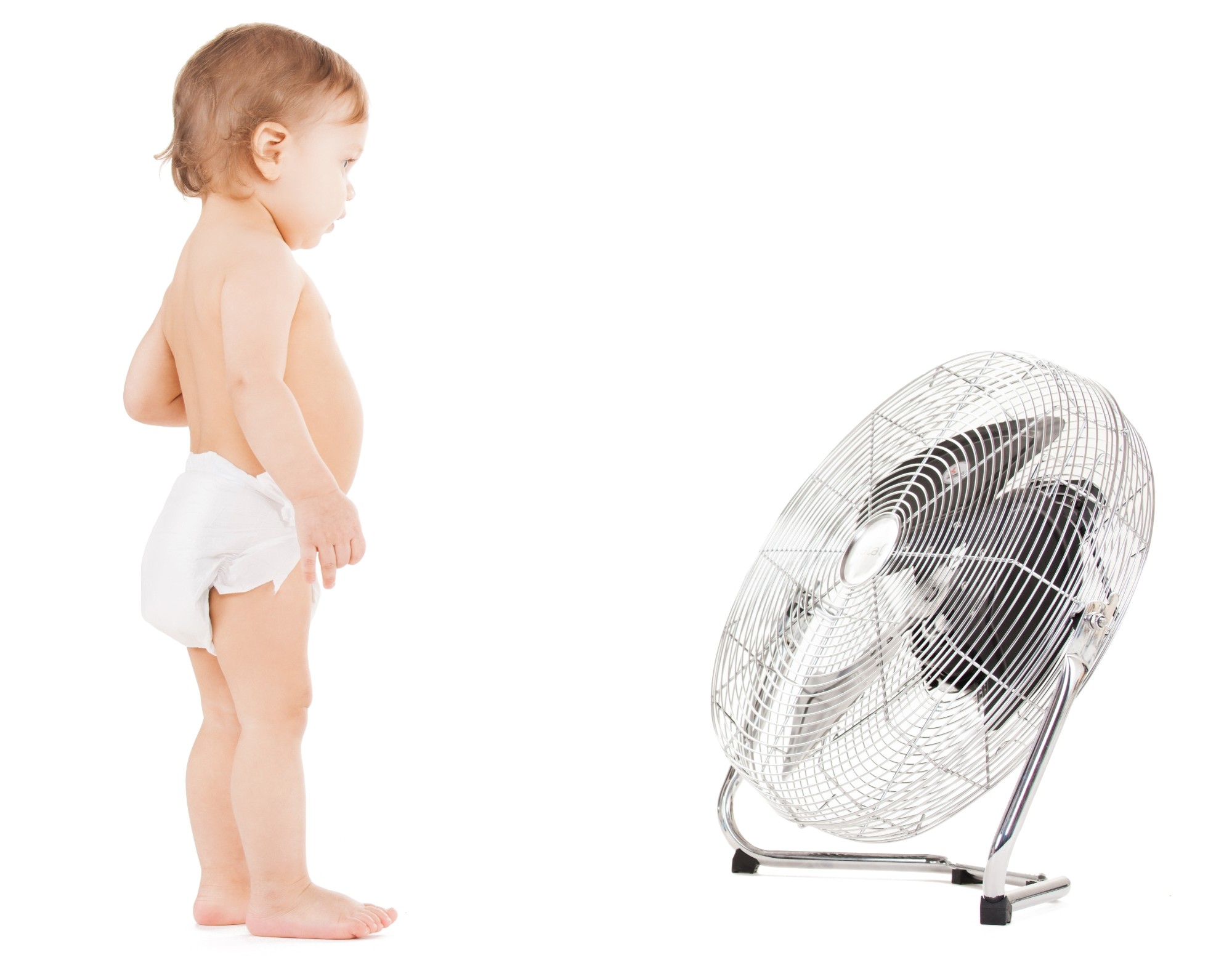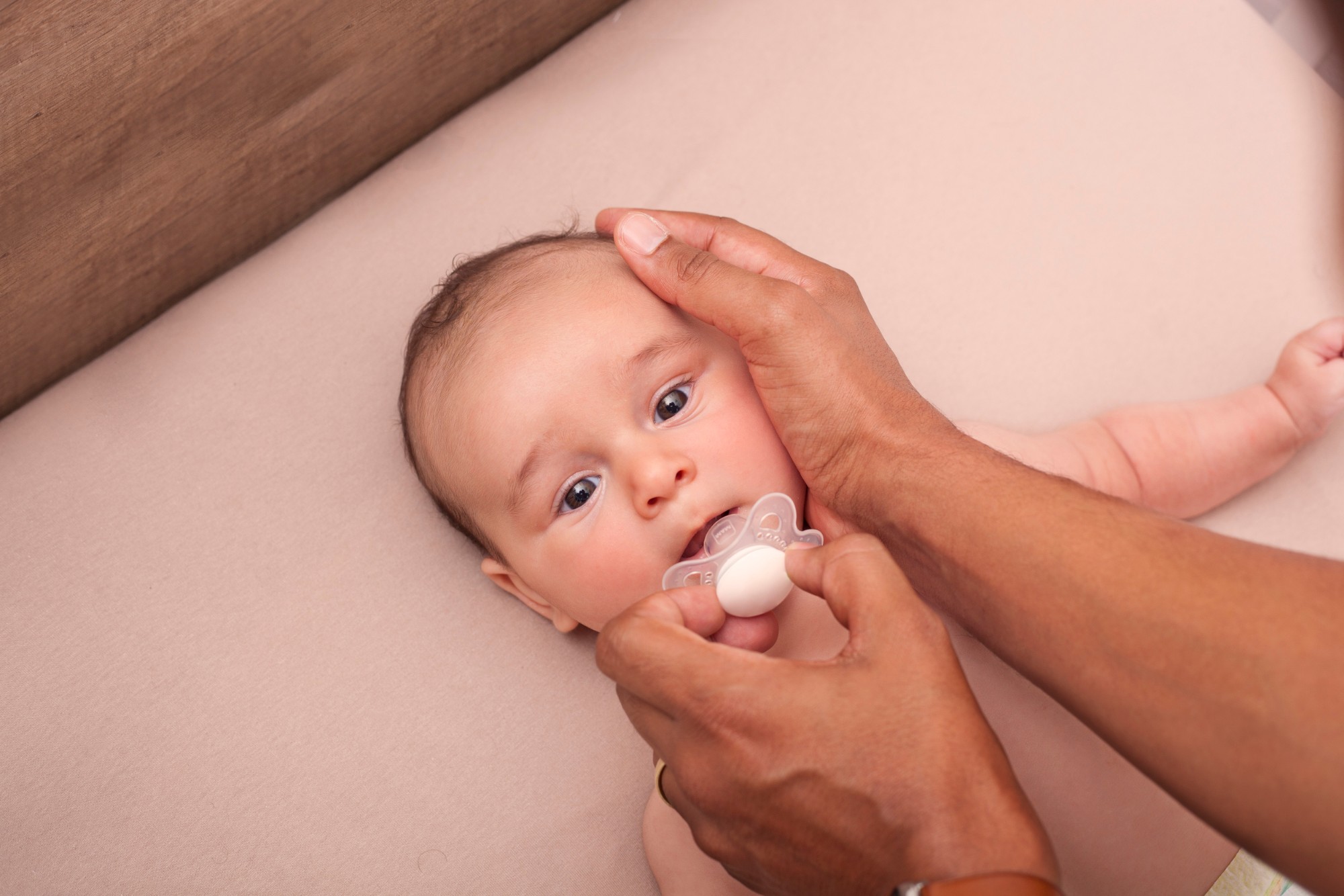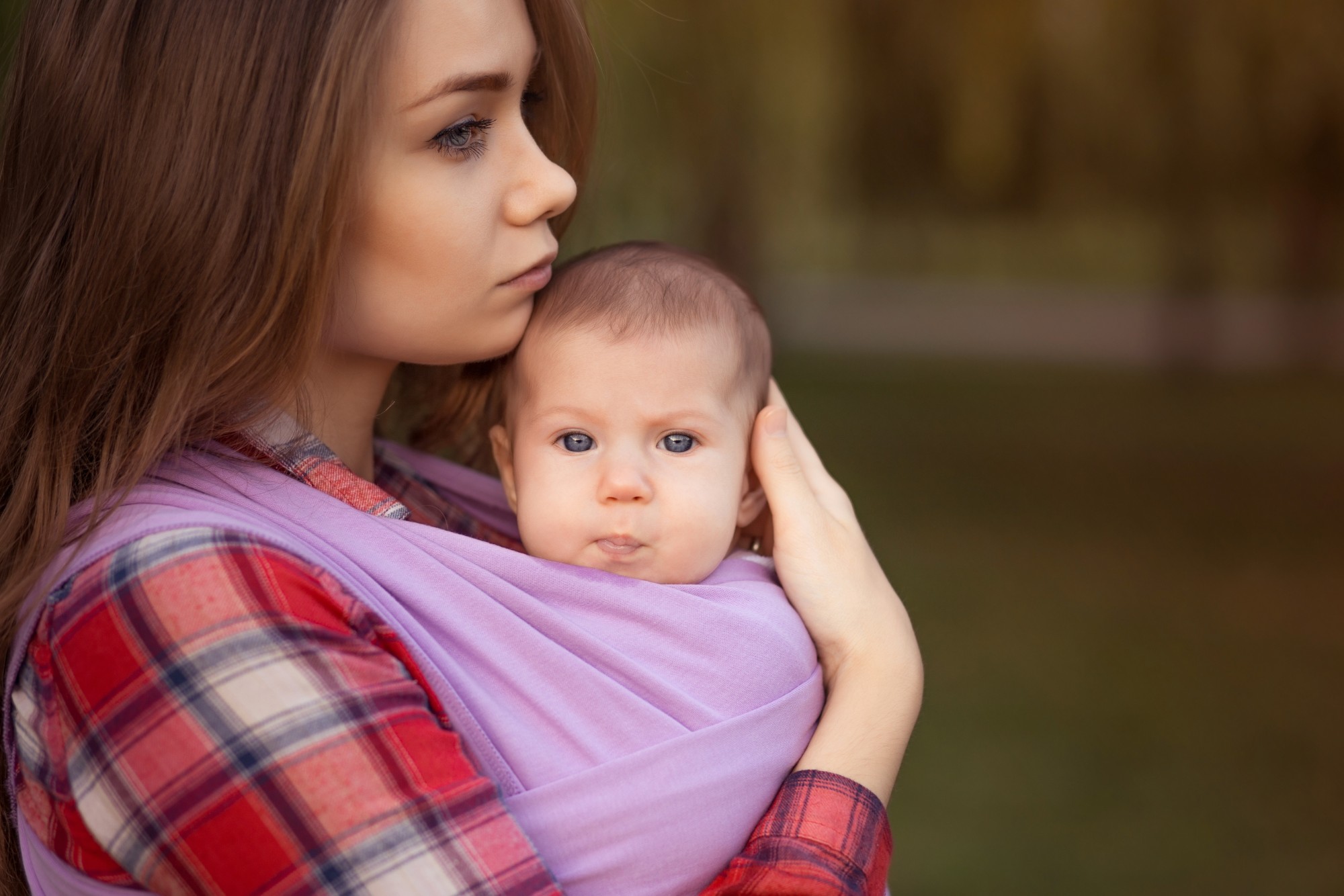
Air conditioning can dry the humidity in the room, and babies and children can wake with a dry mouth and feel thirsty and their cries can equate to more nighttime feeding occurrences. Fixing humidity doesn’t mean they’ll have one less night feed – if they are hungry, then they absolutely need to be fed!
For children who are mouth breathers and sleep with their mouth open, a dry room can be an issue and sleep disrupter.
Humidity Range and Reasoning
A humidity range between 40-60% is healthy for the body, mainly because bacteria have a hard time growing in this range. The EPA’s recommends 30-50% for preventing mold growth in the house as higher humidity promotes mold growth. Some children’s hospitals keep their air at 55%. How a room is built and insulated is also a factor for promoting mold growth. If walls get cold at night, mold is more likely to grow.
Aim for a higher humidity level without mold growth. Factors include the season and construction of the room. You can get an inexpensive humidity thermometer or pick one up from your local hardware store.
The humidity level will be raised significantly if you aim a humidifier or diffuser at your child’s crib or, but the overall humidity of the room will not be as high. This is an effective way to give Baby the benefit of humidity while decreasing your risk of mold. However, you need to be sure Baby is warm if you’re using a cold mist.
Newborn Baby Sleep Temperature
If your child is an amazing newborn or beautiful older baby, the room should be between 68-72 degrees F.
It is very important that you not overheat your newborn when Baby sleeps as it increases the risk of SIDS/SUIDS. It has also been shown that using a fan can decrease the risk of SIDS/SUIDS by 72%!
Fans help with increasing the mix of the exhalation into the room air and improving room ventilation. This percentage is obviously very high and getting a small fan is worth the investment. In addition, you may want to invest in a fan guard, which is made out of fine mesh and fitted over the fan head to prevent little finger getting caught in the blades. This will also prevent your child from poking other objects in the blades. Place the fan away from Baby, ensure at least 3 to 4 feet between the tip of the ceiling fan blades and the edge of your child’s bed or other furniture, so if you have an older child who is tempted to jump on their bed or climb, they won’t reach the fan. A ceiling fan is ideal.
If the room is cooler for Baby, you need more layers. Layers do not equal blankets with babies! They can get intertwined and tangled in them and suffocate. More layers mean instead of just being swaddled in a diaper (which is very effective for a warm room), swaddle Baby in a onesie, or swaddle Baby wearing footie jammies. Or double swaddle! Or swaddle baby in a diaper alone with a velcro swaddle and a receiving blanket burrito-swaddled over it.
Overheating
No hat! At the hospital, the nurses will provide a hat for you… do not keep this on your baby while sleeping swaddled after the first couple of days..! In fact, full-term babies don’t really need a hat when dressed appropriately, even from birth. It’s really a strange American thing. If a nurse places a hat on your baby’s head right at birth, take it off! Smelling your baby’s head can trigger pheromones and increase oxytocin and help you birth your placenta!
Socks for sleep are also a no-no. Babies with cool extremities are not cold, and it helps them self-regulate their temperature while not wearing these. Socks and hats while sleeping swaddled can contribute to overheating and SIDS/SUIDS. You can check if your baby is too hot by feeling the back of their neck and upper back. If they’re clammy, they are too hot. If you’re warm, your baby is hot! If you’re hot, your baby is very hot! If you’re cold, they are probably perfect. Babies overheat faster than adults! Again, the ideal temperature for babies is 68-72 degrees F; this can be super cold for adults, but it’s super ideal for a sleeping baby, and some pediatricians even recommend the room be as low as 66 degrees F! Wow!
Why Swaddle Baby?
Swaddling is effective during the Fourth Trimester to help mimic the feeling of the womb. After wrapping Baby up in a blanket like a little burrito, Baby feels safe and secure because Baby feels boundaries, like when inutero. Baby is born with over 70 reflexes that Baby loses as Baby develops, and one is called the moro reflex or startle reflex. Swaddling helps Baby feel the boundary when disrupted by the reflex so that they have an easier time falling asleep and staying asleep. It can take up to 4 or 5 months for Baby to stop the startling, but you can stop swaddling after Baby starts rolling over and transition to a sleep sack.
Which Swaddles are Best?
We love the Ollie swaddle, which makes swaddling a breeze with velcro.
For quick layering advice, many mothers find “inception swaddling” or double swaddling super effective: first place Baby (wearing a diaper only) in a SwaddleMe or Happiest Baby Sleepea Swaddle, and then burrito-swaddle Baby in a muslin swaddle blanket such as a lightweight Aden + Anais muslin cotton receiving blanket.
Many of our clients love to double swaddle with the Miracle Blanket Swaddle and the Halo Swaddle for the second layer as well.
Toddler Sleep Temperature
It’s also proven that the ideal temperature for sleep is between 65-70 degrees Fahrenheit. If your child is a terrific toddler, dress them in a single layer of long pants and long sleeves. If the room is warm and it’s not a variable you can control, stick with short sleeves or nothing but a diaper.
Thirst Solutions Caused by Dry Air
As an adult, it’s easy to have a glass of water next to our beds when we wake thirsty. Obviously, this is dangerous for babies! However, toddlers can have a spill-proof cup near their bed such as the Munchkin 360 Training Cup. This cup is a great stepping stone for Little Ones transitioning from the bottle as it has a 360-degree drinking edge. Its spout-less design eliminates spills completely so if your child falls asleep with it in their hands or bed, you don’t need to worry about mattresses getting soaked as the cup automatically seals when your child stops drinking.
These are better to use than a straw-type of sippy cup for both developmental and sanitary reasons:
- These cups are recommended by newborn care specialists, dentists, early intervention specialists, occupational therapists, and speech therapists.
- They improve tongue, oral development, and in-turn, speech function as they help develop mouth muscles.
- They’re easy to clean with no extra valves or parts.
- The top piece, where your child’s mouth will touch, is silicone material; thus, it’s hypoallergenic since there are no open pores to harbor bacteria.
These cups also come in stainless steel if you want to keep it in the fridge for children who absolutely love cold water on hot days.
Buying the Best Humidifier or Diffuser
If you use air-conditioning or central heating, you may consider adding a humidifier to the room. A cool-mist diffuser/humidifier combo works really well.
Crane Humidifiers: Awesome and easy larger cool-mist humidifier. Don’t pour water into the doughnut hole. Everyone makes this mistake! Remember to tell your partner. You need to lift the clear top portion off, bring it to the sink, and fill it from the bottom by turning it upside down and unscrewing the cap.Diffusers are another option to create humidity and can be used with essential oils. These diffusers require no filter for the essential oil. You just add a couple of drops of GMO-free pure essential oils which are calming and effective for sleep such as chamomile and lavender directly in the basin. Only use the red light setting because other lights have different wavelengths that inhibit melatonin and disrupt sleep. (Read more about Baby Night Lights and Better Sleep here.) You can also dim the brightness of the light and it has a cool-mist, doubling as a diffuser and humidifier. The waterless auto shut-off feature is a great safety net so when all the water evaporates, it shuts off.


